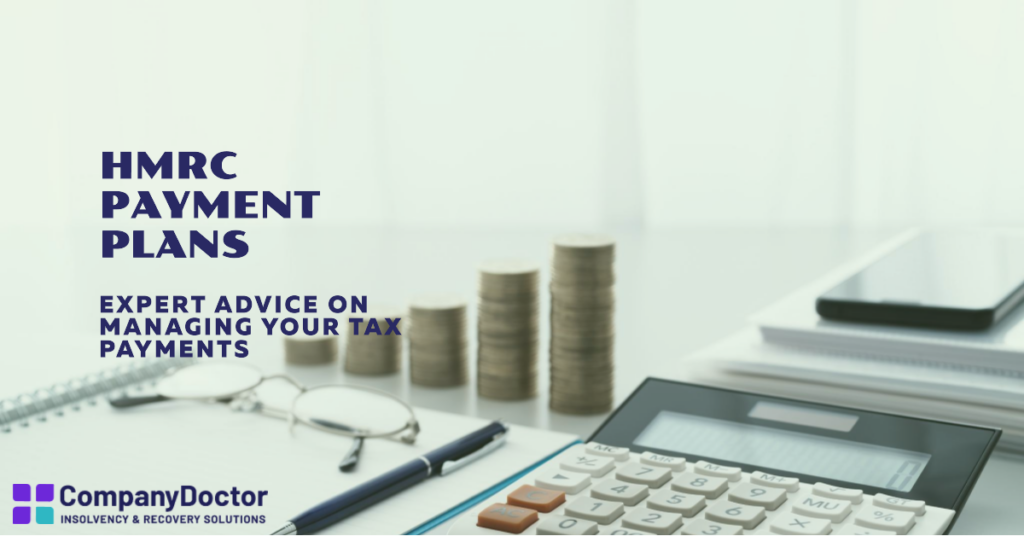In this article, we will delve into the reality of setting up a HMRC payment plan, a solution that allows you to pay your Self Assessment tax bills on a weekly or monthly basis. We will uncover the process, benefits, and potential pitfalls of this approach, providing you with a comprehensive guide to help you make informed decisions about your tax payments. This article explains the payment plan hmrc.
Whether you’re a self-employed individual, a small business owner, or simply someone who finds themselves unable to pay their tax bill in a lump sum, this guide will shed light on the often misunderstood concept of HMRC payment plans. We’ll also introduce you to the “Time to Pay” arrangement, a specific type of payment plan offered by HMRC.
So, if you’re grappling with tax debt and seeking a manageable way to fulfil your obligations, read on. This article could be the first step towards regaining control of your financial situation.
Quick Links
Understanding HMRC Payment Plans
A payment plan with HMRC, often referred to as a “Time to Pay” arrangement, is essentially an agreement between you and HMRC that allows you to pay your tax bill over a period of time, rather than in a single lump sum. This can be particularly beneficial if you’re facing financial difficulties and are unable to pay your tax bill by the deadline.
The need for a payment plan often arises when an individual or business completes their Self Assessment tax return and discovers that they owe more tax than they can afford to pay at once. Self Assessment is a system HMRC uses to collect Income Tax. It’s used by people with complex or varied income sources, such as the self-employed, company directors, and those with high incomes from savings, investment or property.
When you complete your Self Assessment tax return, you calculate how much Income Tax and National Insurance you owe based on your income and expenses for the tax year. The resulting amount is your tax bill, which is typically due by 31st January following the end of the tax year.
However, if you’re unable to pay this bill in full by the deadline, you risk facing penalties, interest charges, and potential action from debt collection agencies. This is where a HMRC payment plan can come into play, providing a structured and manageable way to clear your tax debt over time.
Remember, it’s always better to contact HMRC and arrange a payment plan if you’re unable to pay your tax bill, rather than ignoring the problem and hoping it will go away. HMRC is generally willing to work with taxpayers to find a solution that suits both parties.
The Reality of a HMRC Payment Plan
Setting up a payment plan with HMRC can be a lifeline when you’re struggling to pay a tax bill. However, it’s important to understand the implications of entering into such an agreement.
Firstly, a payment plan is not a way to reduce your tax bill. The full amount of tax owed must still be paid, but the payments are spread over a period of time to make them more manageable. This can provide significant relief if you’re facing a large tax bill that you can’t pay in one go.
Secondly, while a payment plan can help you avoid immediate financial hardship, it’s not a long-term solution to ongoing financial difficulties. If you’re consistently unable to pay your tax bills, it may be a sign that you need to seek financial advice or consider changes to your income or expenditure.
Now, let’s delve into the concept of “Time to Pay”. This is a specific type of payment plan offered by HMRC for those who are unable to pay their tax bill on time. It’s designed to help individuals and businesses experiencing temporary financial difficulties.
Under a “Time to Pay” arrangement, you agree to pay your tax bill over a period of up to 12 months, although in exceptional circumstances this can be extended. The payments are typically made on a monthly basis via Direct Debit.
To set up a “Time to Pay” arrangement, you’ll need to contact HMRC and provide details about your income, expenditure, assets, and savings. This information is used to assess your ability to pay and to determine a reasonable payment schedule.
It’s important to note that “Time to Pay” arrangements are not automatically granted. HMRC will only agree to a payment plan if they believe you genuinely cannot pay your tax bill in full and on time, and that you’ll be able to meet the agreed payment schedule.
Freephone including all mobiles
Setting Up a Payment Plan with HMRC
Setting up a payment plan with HMRC involves a series of steps. Here’s a step-by-step guide to help you navigate the process:
Contact HMRC
If you’re unable to pay your tax bill on time, the first step is to contact HMRC. You can do this online via the HMRC website. It’s important to do this as soon as possible, ideally before the payment deadline.
Provide Details
When you contact HMRC, you’ll need to provide details about your income, expenditure, assets, and savings. This information is used to assess your ability to pay.
HMRC Assessment
HMRC will review the information you’ve provided and assess your ability to pay your tax bill. This will determine whether you’re eligible for a payment plan.
Payment Plan Approval
If HMRC agrees that you’re unable to pay your tax bill in full and on time, and that you’ll be able to meet the agreed payment schedule, they will approve a payment plan.
Set Up Direct Debit
Once your payment plan is approved, you’ll need to set up a Direct Debit to make your payments. This is typically done on a monthly basis.
Make Monthly Payments
After setting up your Direct Debit, you’ll need to make your monthly payments as agreed in your payment plan.
Complete Payment Plan
Continue making your monthly payments until your tax bill is paid in full.
Here’s a visual representation of the process:
If your payment plan is not approved, you’ll need to explore other options for paying your tax bill. This could include borrowing money to pay your bill, or seeking advice from a debt advisor or insolvency practitioner.

Benefits of a HMRC Payment Plan
Setting up a payment plan with HMRC can offer several advantages, particularly if you’re struggling to pay a tax bill. Here are some of the key benefits:
- Avoiding Debt Collection Agencies: If you don’t pay your tax bill, HMRC may pass your debt to a collection agency. This can lead to additional stress and potentially more costs. By setting up a payment plan, you can avoid this scenario and manage your tax debt directly with HMRC.
- Managing Tax Debt Effectively: A payment plan allows you to spread the cost of your tax bill over a period of time, making it more manageable. This can help you to budget effectively and avoid falling into further debt.
- Preventing Penalties: HMRC can impose penalties and interest charges if you don’t pay your tax bill on time. By setting up a payment plan, you can avoid these additional costs.
- Maintaining a Good Relationship with HMRC: By demonstrating that you’re taking steps to manage your tax debt, you can maintain a good relationship with HMRC. This can be beneficial if you need to negotiate with them in the future.
- Peace of Mind: Perhaps one of the most significant benefits of a payment plan is the peace of mind it can provide. Knowing that you have a plan in place to manage your tax debt can reduce stress and allow you to focus on other areas of your life or business.
Remember, while a payment plan can provide temporary relief, it’s not a long-term solution to financial difficulties. If you’re consistently struggling to pay your tax bills, it may be worth seeking financial advice.
Frequently Asked Questions
Here are some common questions and answers related to HMRC payment plans:
What is a Self Assessment payment plan?
A Self Assessment payment plan is an arrangement you make with HMRC to pay your Self Assessment tax bill in instalments, rather than in one lump sum. This can be helpful if you’re unable to pay your tax bill by the deadline.
How do I set up a payment plan with HMRC?
You can set up a payment plan with HMRC by contacting them directly, either online or by phone. You’ll need to provide details about your income, expenses, assets, and savings, which HMRC will use to assess your ability to pay.
What is HMRC’s Time to Pay scheme?
Time to Pay is a scheme offered by HMRC for taxpayers who are unable to pay their tax bill on time. If you’re eligible, HMRC will allow you to pay your tax bill in instalments over a period of time.
What happens if I can’t pay my tax bill on time?
If you can’t pay your tax bill on time, it’s important to contact HMRC as soon as possible. They may be able to set up a payment plan for you. If you don’t contact HMRC and don’t pay your bill, they may take action to collect the debt, such as using a debt collection agency.
Can I pay my Self Assessment tax bill on a weekly basis?
While HMRC typically sets up monthly payment plans, they may be able to arrange a weekly payment plan in some circumstances. You’ll need to discuss this with HMRC when setting up your payment plan.
Remember, if you’re struggling to pay your tax bill, it’s important to seek advice as soon as possible. You can contact HMRC directly, or speak to a debt advisor or insolvency practitioner for help.
Conclusion
In conclusion, setting up a HMRC payment plan can be a viable solution if you’re unable to pay your tax bill on time. It allows you to manage your tax debt effectively, avoid penalties, and maintain a good relationship with HMRC. However, it’s important to remember that a payment plan is not a long-term solution to financial difficulties. If you’re consistently struggling to pay your tax bills, it may be worth seeking financial advice.
If your company is facing financial difficulties and you’re unsure of the next steps, Company Doctor is here to help. As licensed insolvency practitioners based in Leeds, we offer advice and solutions to directors with insolvent companies. We can guide you through the process of a Creditor’s Voluntary Liquidation, helping you to navigate this challenging time.
Don’t struggle alone – reach out to us today. You can call us on 0800 169 1536 or leave an enquiry on our website. Let us help you find the best solution for your company’s financial situation.
References
The primary sources for this article are listed below.
Self Assessment tax returns: Overview – GOV.UK (www.gov.uk)
HM Revenue & Customs – GOV.UK (www.gov.uk)
Contact HMRC – GOV.UK (www.gov.uk)
Details of our standards for producing accurate, unbiased content can be found in our editorial policy here.

